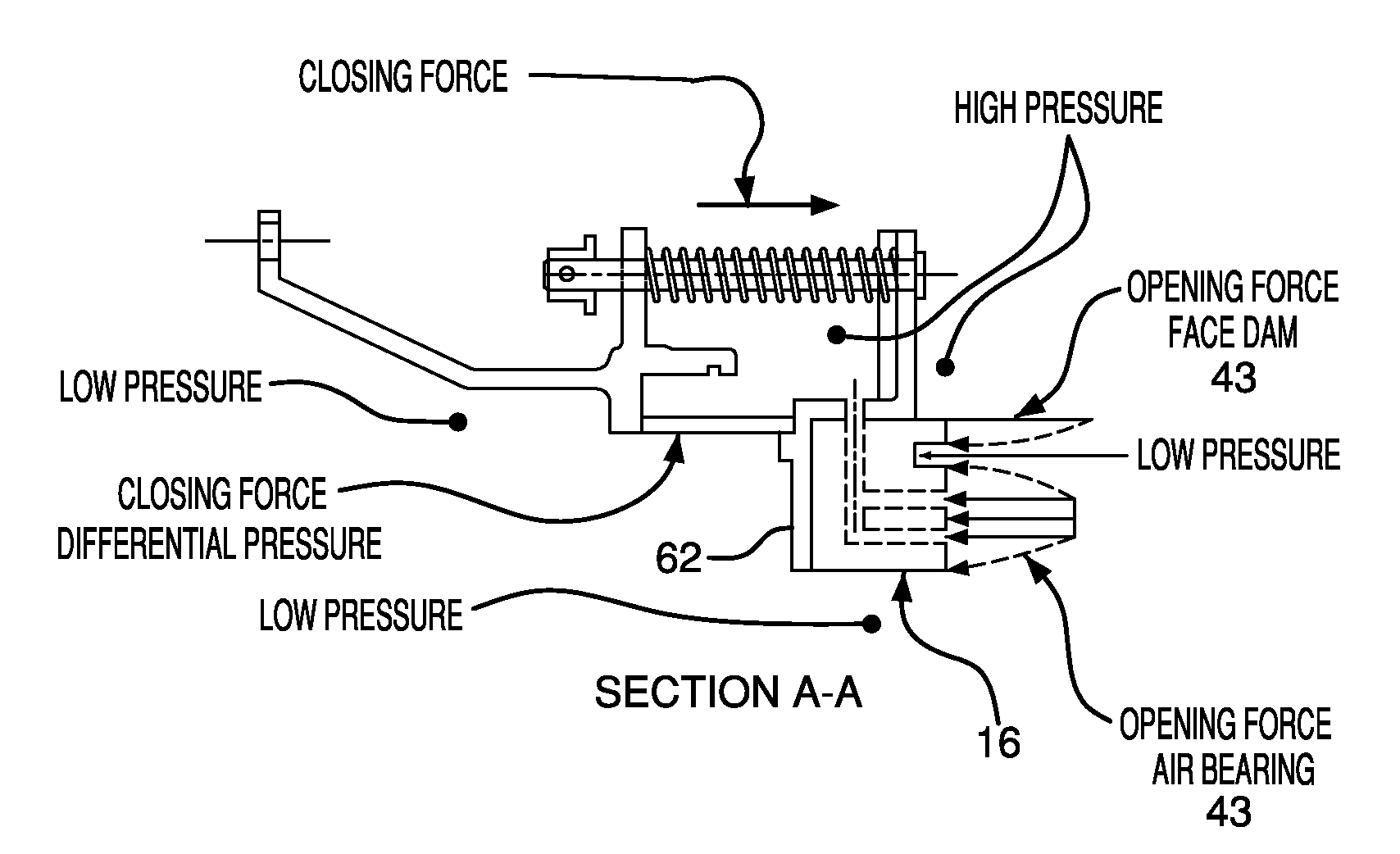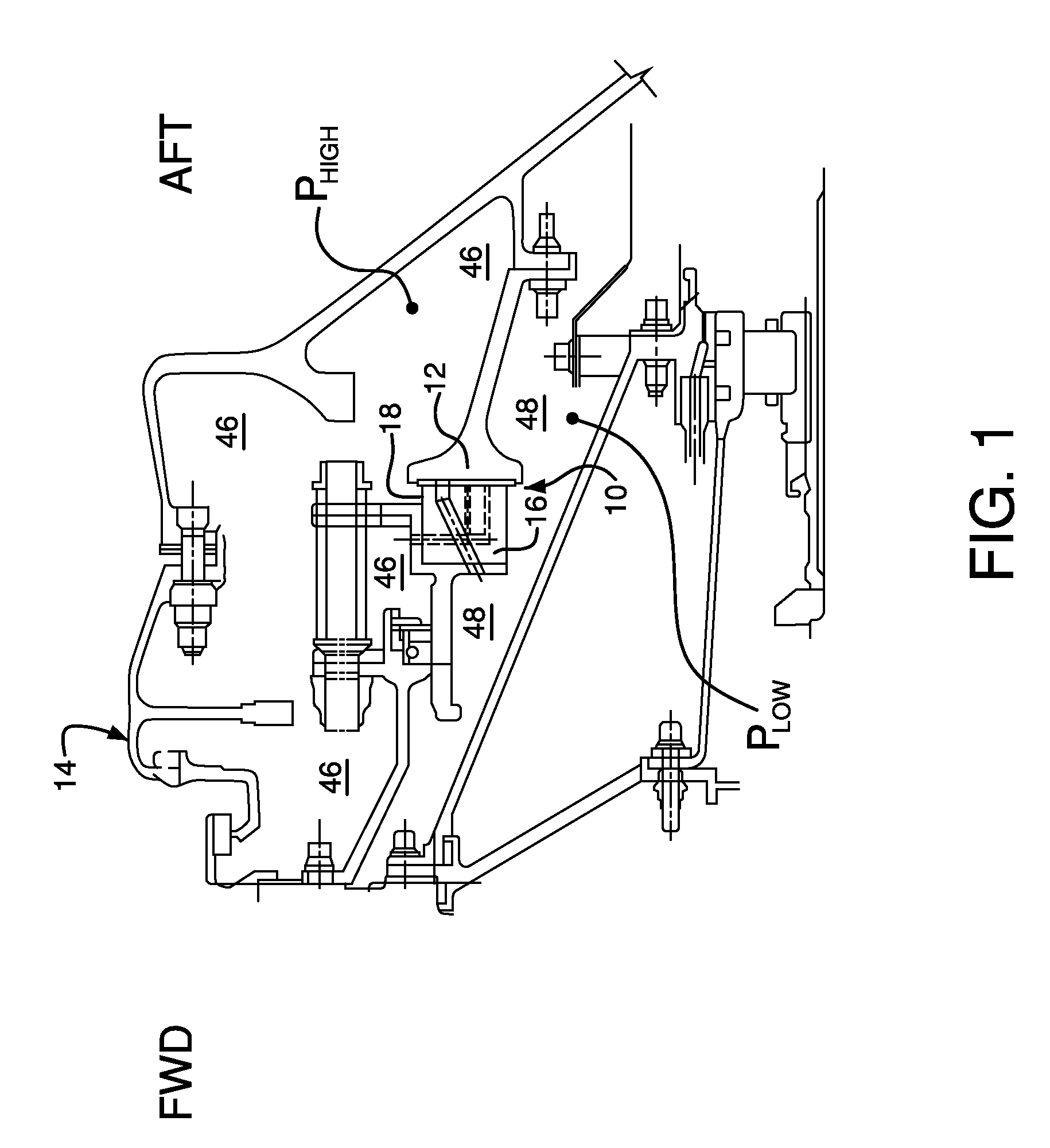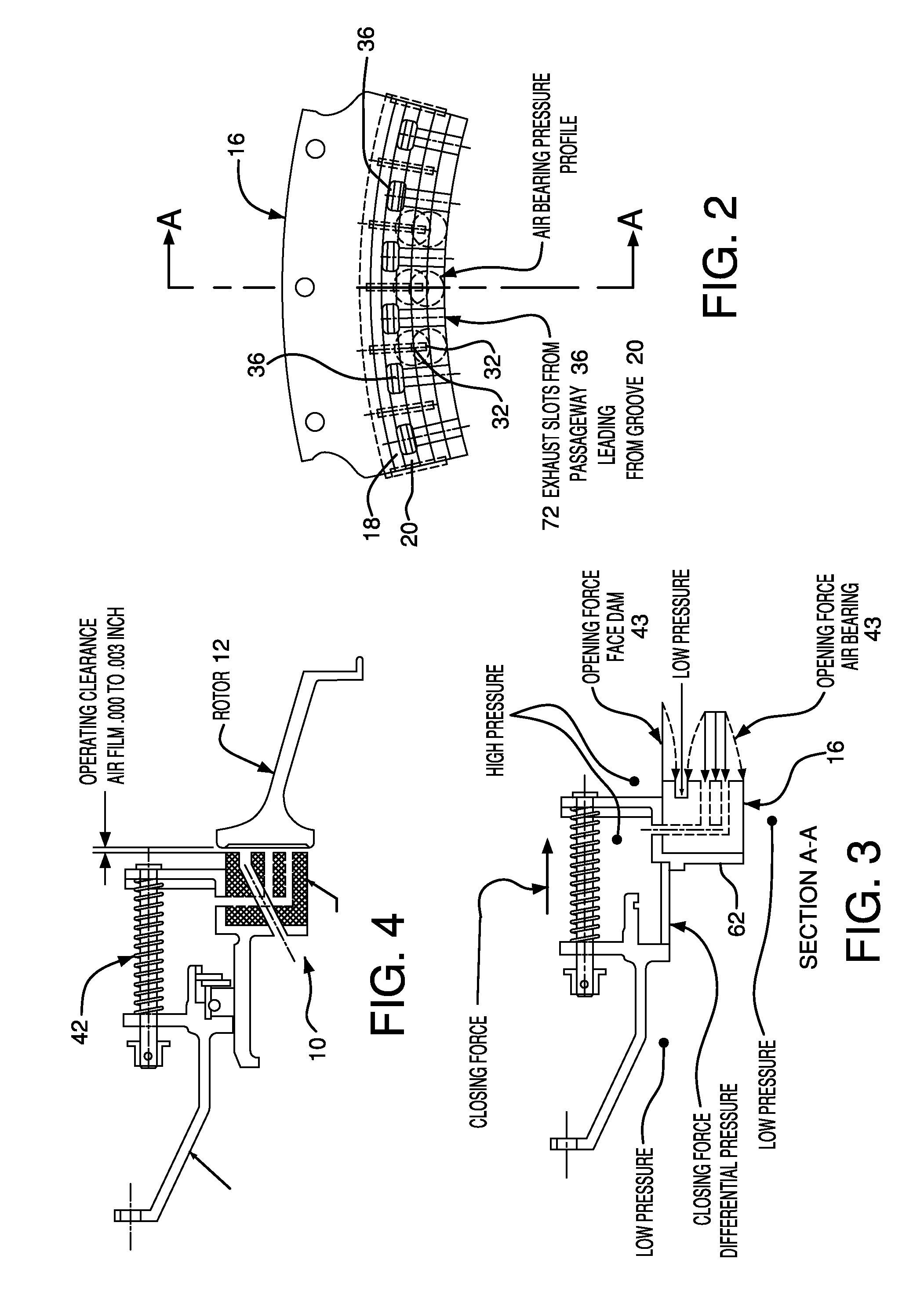Carbon hydrostatic face seal
a hydrostatic face and carbon technology, applied in the direction of machines/engines, liquid fuel engines, mechanical equipment, etc., can solve the problems of increasing fuel consumption, reducing engine efficiency, and significantly diminishing the functionality of the engine itsel
- Summary
- Abstract
- Description
- Claims
- Application Information
AI Technical Summary
Benefits of technology
Problems solved by technology
Method used
Image
Examples
Embodiment Construction
[0024]Referring to FIG. 1, a segment of a gas turbine engine, designated generally as 14, is illustrated. More specifically, a force balanced seal, according to the present invention, is illustrated and may be considered to include a rotor, designated generally 12, which forms a part of the gas turbine engine, and a sealing assembly, designated generally as 10. The sealing assembly, discussed herein, is provided as a sealing means respecting and sometimes against the rotor 12 by a stationary annular carbon graphite member 16. To this end, the sealing assembly 10 respecting and sometimes contacting the rotor 12 provides a barrier for compartmentalizing a high pressure region 46 from a low pressure region 48.
[0025]Referring to FIG. 10, the sealing assembly of the present invention is shown as isolated from the gas turbine engine. The sealing assembly is comprised of a stationary annular sealing member 16, an annular support housing 50, a plurality of coil springs 42, and a secondary s...
PUM
 Login to View More
Login to View More Abstract
Description
Claims
Application Information
 Login to View More
Login to View More - R&D
- Intellectual Property
- Life Sciences
- Materials
- Tech Scout
- Unparalleled Data Quality
- Higher Quality Content
- 60% Fewer Hallucinations
Browse by: Latest US Patents, China's latest patents, Technical Efficacy Thesaurus, Application Domain, Technology Topic, Popular Technical Reports.
© 2025 PatSnap. All rights reserved.Legal|Privacy policy|Modern Slavery Act Transparency Statement|Sitemap|About US| Contact US: help@patsnap.com



